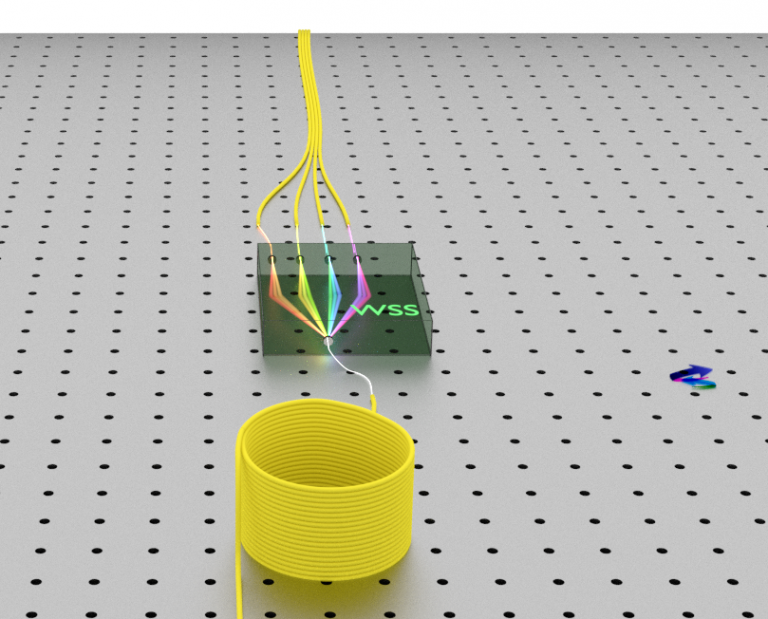
Optical Switch
Conventional Wavelength Selective Switches (WSSs) steer light in one dimension. This fundamentally limits the number of output ports.
A typical WSS has one input fibre, and multiple output fibres. Light is launched into free space from the input fibre, at the centre of a linear fibre array. Relay lenses project the light onto a Liquid Crystal on Silicon (LCoS) beam steering device. A diffraction grating between the relay lenses is used to spatially separate the light, so that each Wavelength Division Multiplexed (WDM) signal beam is projected onto a different area of the LCoS.
The light is then reflected from the LCoS beam steering device back through the optical system, and couples into an output fibre in the linear fibre array. Changing the pattern displayed on the LCoS device changes which output fibre the light couples into. The pattern can be changed independently for each wavelength channel. This allows each wavelength channel to be independently, reconfigurably switched to any chosen output fibre.
A cylindrical lens is used as part of the relay optics, to elongate the beam projected on the LCoS device. This allows each wavelength channel to be steered to a greater number of output ports, but each WSS is still limited to around 20 output ports. Our unique WSS technology steers light in two dimensions, not one. The cylindrical lens in the conventional WSS is replaced by a second spherical relay lens, and the linear fibre array by a 2D fibre array.This means the beams projected on the LCoS device are circular, not elongated. Our expertise in controlling the LCoS device means that the beams can be steered accurately in two dimensions. The number of output ports is therefore the same as for a conventional WSS, but far less of the LCoS device is used.Multiple independent WSSs can therefore share the same LCoS device. The other optical components can also be shared. One switch module can therefore contain multiple independent WSSs.
You can access the full article here: 24 [1×12] Wavelength Selective Switches Integrated on a Single 4k LCoS Device

